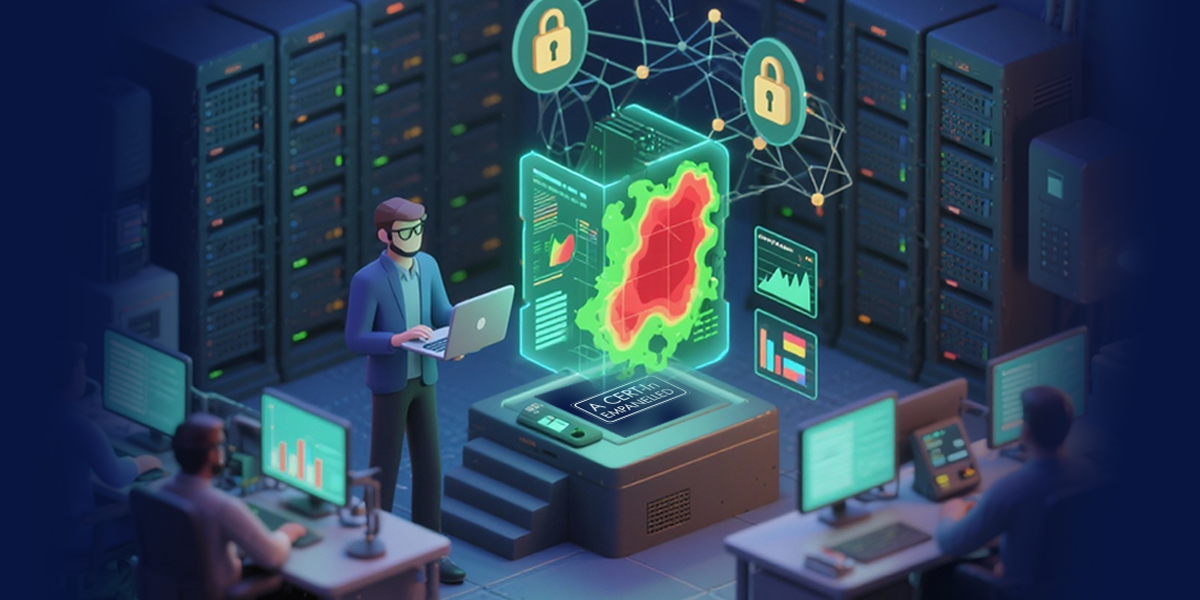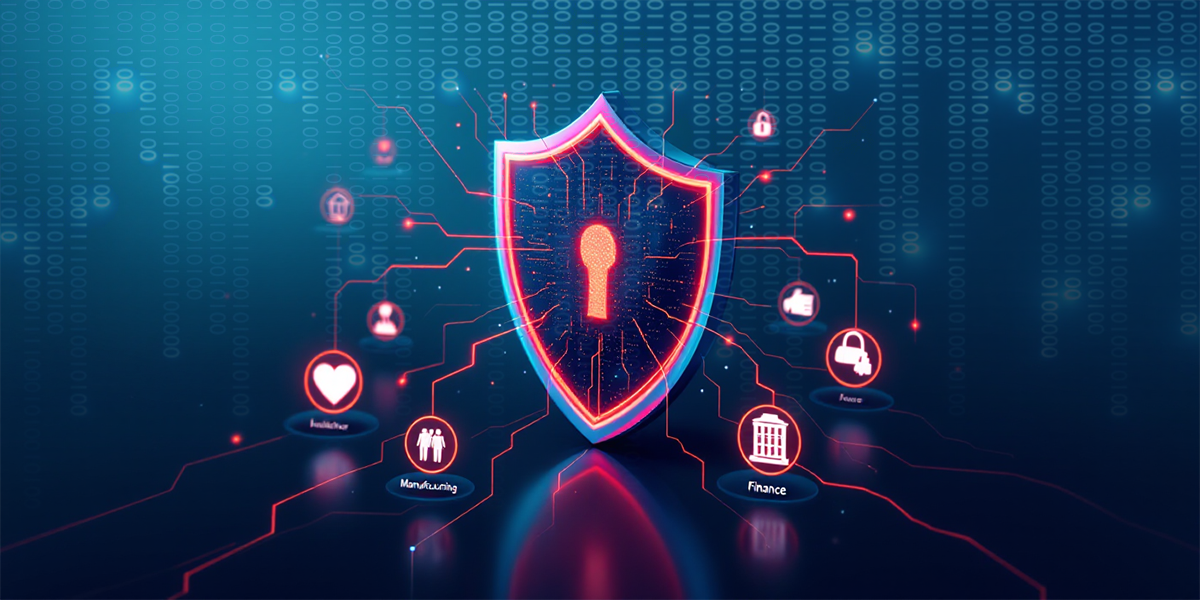The call comes at 2 a.m. It’s your chief financial officer, and the tone of their voice conveys immediate alarm. The organization’s network is locked down, systems are inaccessible, and a ransom demand is flashing across every screen. This scenario is more than a fictional thriller; it reflects the stark reality for business leaders globally grappling with escalating cyber threats. With the average cost of a data breach reaching $4.45 million, the financial and operational stakes are immense. Business continuity and reputation hang in the balance.
This is the nightmare moment every executive fears. It’s a crisis that forces an urgent question: What if your employees were your strongest line of defense rather than your organization’s most vulnerable link? Today, the paradigm of business cybersecurity is shifting—technology remains essential, but the human element is consistently targeted by sophisticated adversaries. Investing in cybersecurity training for employees is no longer just a best practice; it is a strategic imperative for business resilience and sustained competitive advantage.
The Uncomfortable Truth About Your Biggest Vulnerability
Organizations spend billions of dollars each year deploying advanced firewalls, endpoint detection solutions, and cyber risk management software. Security awareness is a common board-level agenda item, and CISOs typically highlight technical countermeasures in executive meetings. Yet, despite massive investments in such security training programs and infrastructure, an uncomfortable truth persists: the majority of cyber incidents involve a human element.
Data Reveals the Human Factor
Industry research shows that approximately 60% of all security breaches result from human error or manipulation. Employees remain susceptible to phishing training shortfalls, poorly understood security policies, and social engineering scams. From clicking on dangerous email attachments to falling victim to business email compromise attacks, employee cyber education gaps play directly into attackers’ hands.
Today’s threat actors aren’t just probing firewalls; they’re engineering targeted attacks to exploit loyal, distracted, or uninformed staff. This reality underscores the renewed urgency of security awareness and employee training, making robust security education and cybersecurity awareness training ROI for executives a critical discussion point at every board meeting.
Read More: Why Every Business Needs An Incident Response Plan
The Existential Threat to Small and Midsize Businesses
Large enterprises might command headlines, but SMBs are often at greater risk. Attackers identify small and midsize businesses as lower-hanging fruit, perceiving lighter defenses and slimmer budgets. Data shows 78% of SMB leaders worry a significant cyberattack could put them out of business. With so many small business owners and SMB executives seeking an employee security training implementation guide for SMBs, practical, role-based security training implementation is now core to business survival.
This stark reality creates a paradox: The very employees who drive growth and innovation can, without effective cyber resilience training and information security awareness, unwittingly become the weakest link. The gap between technology investment and security education is a vulnerability that businesses cannot continue to ignore.
The Hidden Price Tag of Inaction
Overlooking cybersecurity training for employees comes with mounting and often underestimated consequences. Measuring the effectiveness of your cybersecurity training programs and their KPIs against potential breach costs reveals a staggering disparity between investment and potential loss.
A Spectrum of Costs
Breach response costs vary by what went wrong—but consistently, costs skyrocket when the human element is involved:
- Insider Errors: Employee mistakes, such as misconfigured cloud storage, ignoring insider threat prevention protocols, or succumbing to phishing emails, lead to average remediation costs of $3.62 million per event.
- Malicious Attacks: Deliberate insider actions are even more harmful. These attacks, often involving privileged users, average $4.92 million, due in part to their complexity and the extensive access insiders possess.
But the financial hit is only the beginning.
Reputational Damage and Regulatory Fines
Failing to prioritize security culture or cyber risk management doesn’t just result in financial loss; it damages customer trust and brand reputation, resulting in customer attrition, competitive loss, and negative media exposure. Regulatory failure compounds the pain: frameworks such as GDPR and CCPA can levy multimillion-dollar fines for breaches, especially when security education and compliance evidence is lacking.
The Competitive Disadvantage
Security breaches now differentiate winners from losers in every market segment. Forward-thinking companies that deploy effective cybersecurity training programs and invest in cyber resilience training gain trust from clients, partners, and regulators. In contrast, those ignoring security awareness find themselves at a disadvantage when competitors demonstrate stronger breach prevention training, transparency, and regulatory compliance.
Some organizations, however, have rewritten the script: by treating human error cybersecurity prevention strategies for business as an investment—not an afterthought—they turn employees into organizations’ greatest security assets.
Read More: 10 Critical Cyber Security Trends Every Security Expert Must Navigate In 2025
The Great Reversal: Employees as Your Human Firewall
Reframing employees as contributors to a “human firewall” marks a strategic transformation in security posture. It’s about empowering staff with ongoing, relevant employee cyber education that blends technical and behavioral change, ultimately supporting your wider business cybersecurity objectives.
The Staggering ROI of Security Awareness Training
Data shows that investing in cybersecurity training for employees is among the highest-ROI actions a business can take:
- Large Enterprises: For major organizations, cybersecurity awareness training ROI for executives is validated by studies showing up to 562% ROI, meaning every dollar spent pays for itself many times over by avoiding the cost of just one breach.
- SMBs: Security awareness and training deliver an average ROI of 69%, proving highly cost-effective even for small business leaders facing resource constraints.
When measured using effectiveness KPIs (such as reduced phishing click rates, increased incident reporting, and lower incident response times), employee security training programs’ effectiveness measurement KPIs reveal clear, quantifiable benefits.
The Power of a Trained Workforce
A workforce invested in security awareness becomes a distributed sensor network, flagging suspicious activity, minimizing mistakes, and elevating organizational vigilance. Research confirms that 82% of effectively trained employees report threats to IT within 60 minutes of detection, narrowing the attack window substantially and enabling rapid intervention.
This shift in security culture and information security awareness underpins organizational cyber resilience, proving irreplaceable alongside technical controls.
A Strategic Blueprint: Employee Security Training Implementation Guide for SMBs and Enterprises
Developing your workforce into a proactive component of breach prevention requires a well-structured approach that balances executive vision with practical employee training.
Phase 1: Building a Strong Foundation
- Executive Sponsorship: Cybersecurity training for employees achieves its highest impact when C-level and SMB leadership champion the initiative. Active executive cybersecurity awareness training best practices 2025 include regular participation in training, modeling security behaviors, and communicating the strategic intent.
- Baseline Vulnerability Assessment: Start with phishing training simulations and a pre-training survey to highlight current vulnerabilities and measure security awareness.
- Define Success Metrics: Use KPIs for measuring cybersecurity training programs’ effectiveness to set key goals, such as reducing breach incidents, increasing phishing training completion rates, boosting reported incidents, and improving cyber resilience training outcomes. Tie these KPIs explicitly to business continuity and risk management.
Phase 2: Deployment and Engagement Tactics
- Customized Security Education: Employees in different functions (finance, HR, IT, operations) require targeted content and industry-specific security awareness. Healthcare, financial services, and SMB organizations need specialized modules tailored to their workflows and regulatory environments.
- Diverse Content Delivery: Leverage online modules, micro-learning, and in-person workshops to reinforce information security awareness. Gamification and real-world breach simulation can sustain engagement.
- Continuous Phishing Training and Reinforcement: Regular phishing tests, newsletters, and quick tips ensure security awareness remains sharp and top-of-mind, far beyond annual compliance checkboxes.
Phase 3: Integrating Cybersecurity Into Organizational Culture
- Visible Leadership: When C-suite leaders and managers consistently model security best practices, it sends a clear message that security awareness is everyone’s responsibility.
- Positive Reinforcement: Reward teams and individuals who identify threats, take the lead in insider threat prevention, or demonstrate exceptional security culture behaviors. Recognition breeds a culture of vigilance.
- Feedback and Improvement Loops: Create pathways for employee feedback on training modules. Improve course materials based on their insights—continuous improvement ensures your security awareness program evolves ahead of threats.
Overcoming Roadblocks: Common Objections and Practical Bridges
Even the most effective security education programs encounter resistance; addressing objections head-on is integral to shifting mindsets.
Typical Objections and Counter Strategies
- Budget Limitations
- Frame the case as an investment, not an expense. Highlight the ROI of security awareness and compare the cost of training to even a single breach event.
- Start with a high-risk group pilot to demonstrate value and build momentum for broader funding.
- Lack of Time
- Introduce micro-learning modules, allowing employees to complete material in digestible segments. Consistent, regular exposure trumps lengthy annual sessions.
- Executive or Team Resistance
- Connect cybersecurity training outcomes to board-level KPIs, demonstrate strategic advantage, risk mitigation, and competitive differentiation through security culture initiatives.
- Change Fatigue
- Position this as a transformational move: not a one-off project, but a strategic evolution necessary to future-proof against increasingly sophisticated AI-powered threats.
Read More: Your Complete Guide To Cybersecurity Assessment Types
The Strategic Crossroads: Decision Point for Today’s Leaders
The current cyber landscape presents a clear strategic choice: Become a proactive leader in security culture or risk reacting to potentially devastating incidents. Competitors who prioritize cybersecurity training for employees and deploy breach prevention training are building a business advantage rooted in customer trust and operational continuity.
Failing to act means not just facing possible regulatory non-compliance and loss of market share but risking the very survival of your organization—particularly true for smaller businesses with slimmer margins for error.
Your Next Chapter: Five Immediate Steps to Bolster Security Awareness
To transition courageously and effectively into a security-first culture, here are five actionable, high-impact steps for business executives, SMB leaders, and CISOs:
- Host an Executive Security Briefing: Bring together the C-suite and business unit leaders to examine cutting-edge trends, the ROI of cybersecurity awareness training for executives, and the risk landscape.
- Commission a Real-World Phishing Simulation: Engage with a cyber resilience training vendor or your security team to run a simulation and baseline employee susceptibility.
- Appoint a Security Program Champion: Choose a respected internal leader to own the employee training process, manage program momentum, and report progress to the board.
- Launch a Departmental Pilot: Start with a high-impact team such as finance or operations. Document pilot results on KPIs like reduction in successful phishing attempts and improved incident reporting.
- Integrate Security Awareness Into Onboarding: Make security education a foundational part of your onboarding journey for all new hires, setting expectations and organizational standards from day one.
Long-Term Vision: Embedding Security into Your Business DNA
Success is not measured solely by technology, but by the organization’s collective ability to recognize, resist, and recover from evolving threats. By investing in business cybersecurity and integrating employee security training as a core business strategy, you earn customer trust, regulatory goodwill, and a sustained market advantage.
Security is not a one-time investment, but an ongoing commitment. The sooner you begin, the greater the benefits; financially, culturally, and competitively.
Final Inspiration: From Vulnerability to Strength
The journey to cyber resilience begins with the recognition that your people are both your greatest risk and your greatest shield. With the right cybersecurity training for employees, the so-called weakest link becomes your most robust human firewall. Whether you lead a global enterprise or a local SMB, now is the time to invest in security awareness, transform your workforce, and secure your organization’s future.
Take action today, because the organizations that move first gain a lasting advantage.











